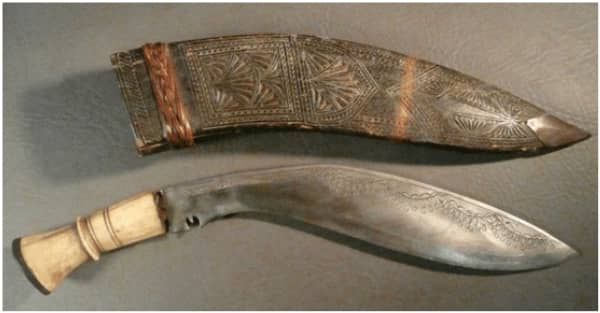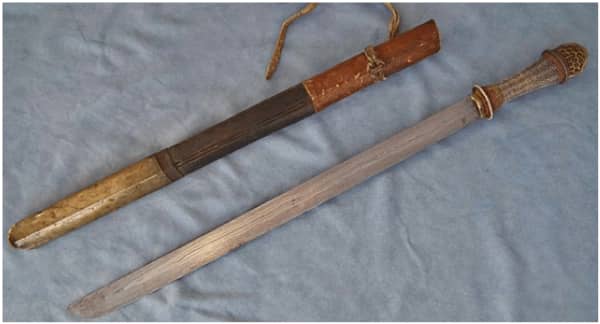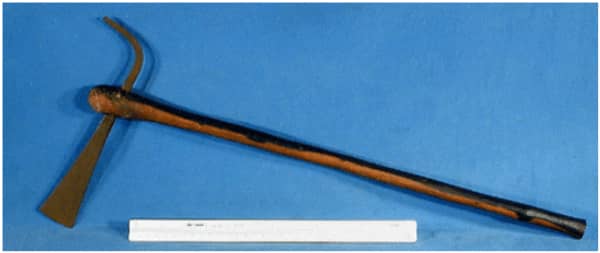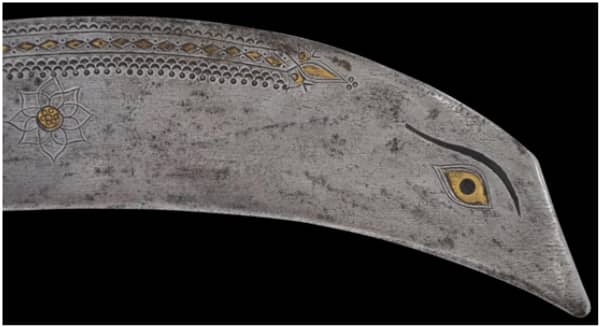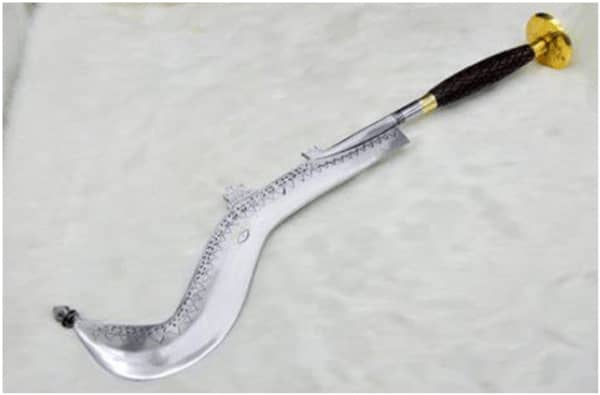Nepal’s traditional cold weapons have a deep personality and have not been assimilated with Indian or Islamic (Persian) cold weapons, so they are of great value.
The reason why Nepal’s cold weapons have not been influenced by Islam is that they have maintained their ancient simplicity for more than a thousand years. The weapons of Mongolia, Turkey, Afghanistan, Persia, Arabia and other ethnic groups have not affected the manufacture of Nepalese cold weapons. Nepal’s cold weapons also have a strong personality. However, due to the close relationship with China, Nepal’s ancient traditional cold weapons have been influenced a lot by China alone, and they remain intact.
▲During the First World War, the Nepalese Gurkhas who fought as mercenaries for the British for money and the Kukeli knife, the Kukeli knife is commonly known as the dog-leg knife, also known as the Gurkha machete
The main ethnic group in Nepal, the Gurkhas, are the descendants of the ancient warriors of Nepal. They are the most noble warriors in the country. Their name is Kshatri. And the strangest one. This knife seems to belong to one of the tiger-killing knives of the mountain people in the Himalayas. It is also like the cattle-killing knives used by various butchers in the Qing Dynasty in China, which is very different from the knives of other ethnic groups.
The Kukri knife is often decorated with Aryan races, and occasionally Indian Buddha statues or flowers are inlaid in its blade with gold and silver threads. This kind of knife has a long history and is an ancient knife with deep personality. Its blade and tip are extremely sharp, and the hair can be broken by blowing, just like a razor. It is a sharp weapon of the Gurkhas in Nepal, and almost every household has it. Killing the enemy in battle will surely kill him and then he will be quick.
▲The Kola Broadsword with a blade shaped like an ancient boat rudder makes you feel very much like the horns on the head of a unicorn beetle
As for the ancient weapons of the Nepalese tribe, the Kora sword is the most famous. This saber also has a deep personality, with a wide blade and a thick back, the head of the blade is as big as an ancient boat rudder, and the blade is very heavy, only those with strong whiskers can wield it freely. It is said that a person who is good at using a knife can cut a sheep into two pieces or two sections with one swing of the knife. The blade near the handle of this knife is about 3.8 cm wide, and its rudder-shaped head is as wide as 15 cm. There is an eight-petal lotus drilled inside the round flower.
▲Ancient Nepalese broad-edged long sword in the 18th century
The Nepalese also use long swords with wide blades. The blades are about 10 cm wide, about 10 centimeters in width, resembling the long swords of the Qin and Han Dynasties in ancient China. Nepalese swords, hammers and axes are mostly inlaid with Buddhist decorative patterns.
There are also several sub-groups of the Nepalese, such as the Chepang and Kusanda of the Chepang people. Especially the Gurungs are the biggest and bravest clan. The Gulong people are a people who use Kukeli Dao and Ke La Dao and hold a small shield. Magars, the Magars, are brave and orderly, and they are excellent soldiers. Sir Charles Napier, the general of the British colonists, recruited the Majia people from Nepal to fill a group of people in 1850 AD; during the First World War, the British also recruited the Nepalese Gurkha troops to fight in the European battlefield. Royal German army.
The Majia people in Nepal like to use bows and arrows, as well as other weapons of the Gurkhas. The aristocratic Brahmin of Nepal is a relatively pure Aryan, which is different from the mixture of the above-mentioned ethnic groups. The predecessor of Nepal was originally 31 small countries on the side of the Himalayas. They were called kings and founding countries on the side of the mountains. Later, they were gradually merged by the Gurkhas and became a country of Nepal. The tribute will continue on schedule.
▲ Danggra steel ax
The Bodhiya people in Garhwal, Nepal, like to hang a wide-bladed light-weight steel ax on their belts, called Dangra. Sometimes they also carry the Gurkha saber, but wear it in front of their bodies, while the Gurkhas wear their sabers behind them.
The arrowheads used by the Nepalese are fat and shaped, resembling the heads of the javelins of the Filipinos. This arrow is about 82 cm long. It is made of bamboo and iron. Although the arrowhead is bulky in shape, it is not easy to pull out once it is shot into the human body.
The relationship between the Nepalese people and China has been friendly throughout the ages, so their weapons have a deep Chinese pre-Qin color until modern times and have never been influenced by Western Islam or Christianity. This may be a proof of China’s pre-Qin culture and its presence in the west of the Himalayas. For example, arrowheads are like those of the Warring States Period in China, and their long arrows are like the javelins of various Chinese tribes, and their long swords are especially like Xiantai swords. Famous short swords are Katar bank and Jamdhar katari, both of which look like Chinese pre-Qin daggers.
As for the big sword named Ram Dao or Kharga, its origin must undoubtedly come from the Chinese Zhou Luan Dao. Its special form is all there, and the name has not been handed down so far. In addition, the Kola broadsword, the small-handled long knife and the Kukeri short knife are purely Nepalese and have a deep personality.
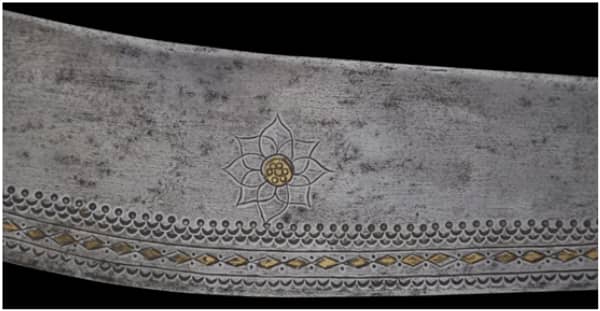
▲ Luan knife
The Katar and the curved dagger have been influenced by the traditional cold weapons of Indian Buddhists. The Nepalese also use long Indian knives with curved blades, decorated with gold and jade, but there are not many of them. The firearms of Nepal were also influenced by the introduction of China at the beginning, and the appearance of the guns carried by them is like the Ming Dynasty shotgun. As for the relatively new type of copper-capped musket, it is a new type of firearm imported from Europe.
Nepal’s bodyguards seem to have been influenced by China’s pre-Qin period, and it still has a Chinese color until the 19th century. For example, the rhinoceros hide shield resembles the rhinoceros shield of the Zhou Dynasty in China, and the halo pattern on the shield is reminiscent of the halo pattern on the bronze drum left by the ancient Wuyue clan along the way. Even the quiver and heart mirror in Nepal are purely Chinese in color and similar in shape, just like the weapons of the Chinese in Ming and Qing Dynasties.
Click to have more Shieldon EDC knives and tools fun.

